Layout Elements
Parking Stall Angle
Ideally, parking lots should be rectangular with parking on both sides of access aisles. For two-way traffic flow, parking spaces perpendicular (90 degrees) to the aisles provide the most efficient design. The efficiency decreases as the parking angle decreases.
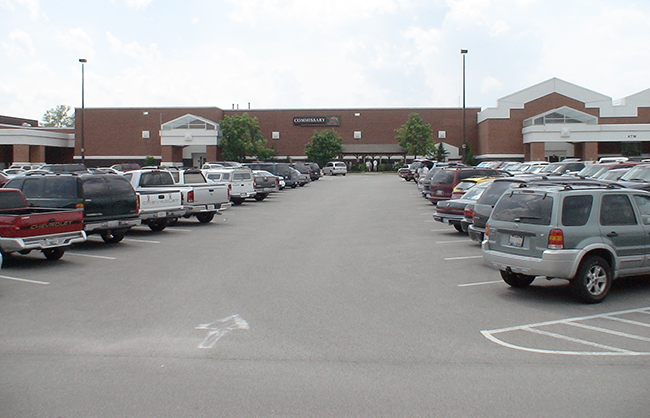
Where a fast turnover rate is expected or where site limitations dictate, 60-degree- or 45-degree-angle parking with one-way aisles may be used. However, the advantage of easy pull-in and pull-out that angle parking allows is often offset by the inconvenience of one-way aisles, and the tendency of motorists to attempt to pull into a space from the wrong direction.
Parking Row Orientation
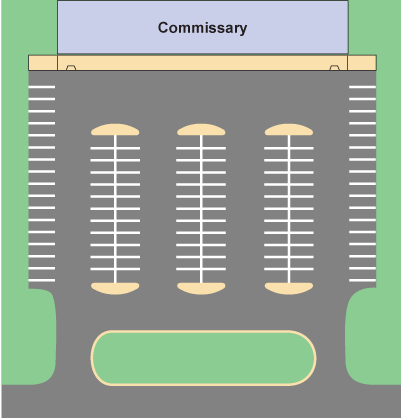
Parking rows should be perpendicular to buildings for the safety and convenience of pedestrians; however, perpendicular rows less than 130 feet long are not practical. Where this occurs, rows parallel to the front of buildings are recommended.
Entrances & Exits
Design entrances and exits to serve as a continuation of traffic aisles. Another good practice is to prohibit stalls so close to the entrance that parking maneuvers would require vehicles to back into the sidewalk or obstruct traffic.
Provide adequate walkway width to allow comfortable pedestrian movement in areas of bumper overhang.
Aisle Orientation
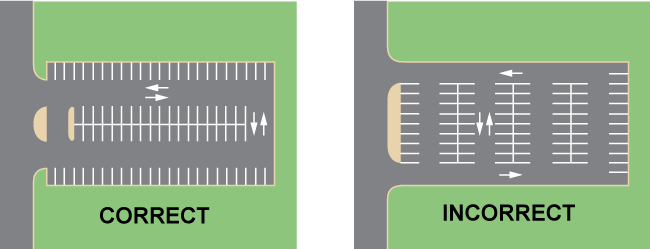
The most efficient arrangement is usually for aisles to be parallel to the longest side of the lot. This results in a 20 percent increase in lot capacity.
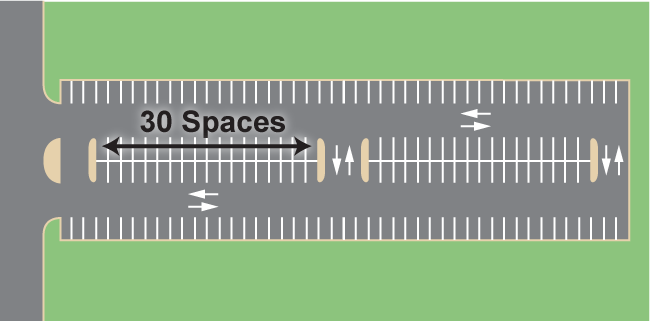
Cross aisles are necessary in large parking areas. Generally, it is recommended to provide a cross aisle for every 30 spaces.
End Islands
Space at the end of each aisle should be kept clear of parked vehicles to allow turning motorists a clear view down the cross aisle. Mark this area with either white paint or a raised traffic island. Islands should be designed to accommodate the turning maneuvers of vehicles in the parking lot. A passenger car requires a right-turning radius of 18 feet.
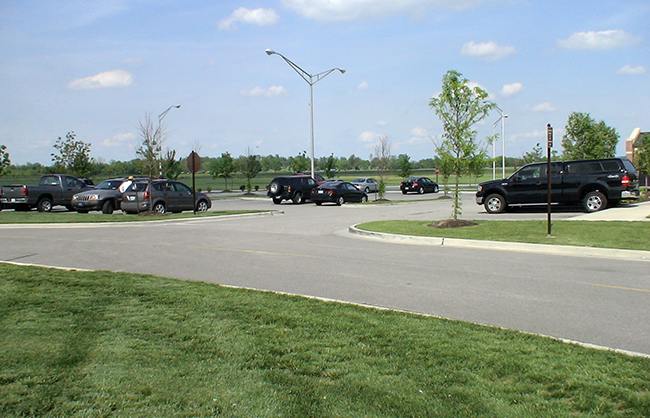
Raised end islands can provide a location for signs and light fixtures. They also provide an aesthetic function by breaking up the "sea of pavement" as well as providing a place for plantings. Designers should consider the requirements for snow removal; as islands may hinder plow trucks.


